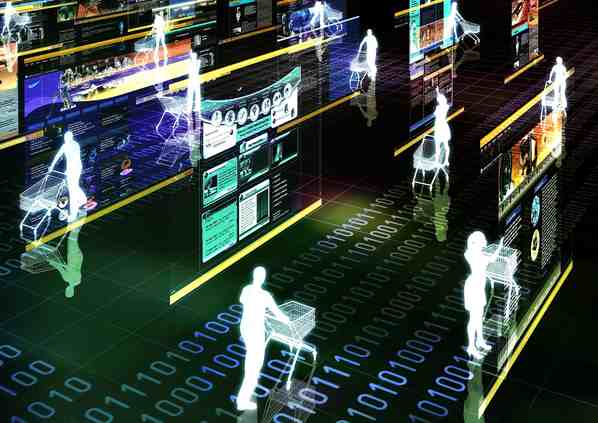
Technology can make or break a business and retail is no different. Keeping up with the latest trends and getting the right tech support is critical in moving your company forward.
Although a lack of technological insight spells doom to some retail companies such as Sears, others like Best Buy have leveraged technology and harnessed the of power of expert IT support to supercharge their business. Technology can be your friend or foe, depending on how you interact with it.
Here are 6 ways that technology can be harnessed to make retail business more profitable now—and into the future.
1. Edge computing
The emergence of fast computing and networking technologies has created a need for faster data computation. Edge computing can offer faster data computing by processing data close to the people that produce or consume the information. When data has to be processed through a central point, a lot of bandwidth and processing time is wasted. Organizations that have embraced cloud computing may not have taken the bandwidth costs into consideration. For instance, a cloud-based system that uses facial recognition might need to run its algorithm through the cloud. On the flip side, the facial recognition algorithm can be hosted locally on an edge server or even on the smartphone itself. Edge computing can, therefore, reduce the processing time as well as the bandwidth costs which helps to give retail customers a better experience.
2. Augmented reality
Augmented reality (AR) is a wide field but it has to do with any tech that makes it possible for a user to view digital information in a real-world application. Unlike virtual reality, AR doesn’t try to replace the real world with a digital one – it maps the real world on digital objects. A practical example of this is how Google Maps uses augmented reality to give directions. Even though augmented reality is a relatively new field, it is growing at an impressive rate. Sophisticated hardware like Google Glass and Microsoft HoloLens have made that adoption of AR in business even easier. As technology continues to advance, we can expect to see more disruptive business applications in the next couple of years.
3. Blockchain technology
Cybercrime is on the rise especially with the increasing adoption of e-commerce and this has created a need for solutions aimed at protecting user sensitive data. Through blockchain technology, a customer’s sensitive information can be masked, thereby allowing them to transact in a safe environment. Blockchain is, therefore, poised to eliminate or reduce full-blown data breaches that have traditionally affected millions of e-commerce customers in the past. Blockchain also offers a fool-proof tracking and authentication process which can come in handy in stopping hackers from compromising systems to award fake coupons and loyalty points. Some large organizations across the globe are already in the process of adopting this technology in their business process.
4. Payment innovations
Fintech has changed the way consumers spend or store money and this has contributed to the rapid growth of e-commerce. In-app purchases, cryptocurrency, peer-to-peer lending, Facebook cash, and hundreds of e-wallets are just some of the innovations that are already disrupting the e-commerce field. These payment innovations have created new possibilities in business. For instance, merchants can now accept payments from any part of the world irrespective of the local currencies of their customers. Payments via mobile phones have also opened up huge possibilities for e-commerce. For instance, it is now possible to run mobile commerce (M-commerce) stores. Mobile payment innovations like Samsung Pay, Apple Pay, and M-Pesa have made it possible for customers to make purchases safely and easily on their mobile devices.
5. Chatbots
A chatbot is a computer program that “talks” with customers on the company website. Chatbots have existed for years but they are yet to be fully utilized in business. Deploying a chatbot on your company website will give your customers real-time customer support round the clock and that can significantly improve your conversation rates. As artificial intelligence technology continues to improve, the chatbots will keep getting more sophisticated. For instance, it is now possible to use a predictive analytics algorithm to determine user satisfaction or determine if a customer is likely to buy a product.
6. Growth of the brick-and-mortar model
When e-commerce started gaining traction a couple of years ago, it was widely feared that it would replace the brick-and-mortar business model. But it is now emerging that e-commerce is actually strengthening the model rather than replacing it. The only trick is knowing how to integrate the two. For instance, e-commerce can be used to improve efficiency at a physical store when customers pre-order on the website and only visit the store to pick up their orders. Best Buy is one of the organizations that has used this approach to improve customer experience.
Companies that embrace new technologies to improve their business process will remain relevant, but those that are resistant to change will fail. Technology may be disruptive but adapting to emerging technological trends will help to position your retail business as a market leader in your niche.
About the author
Mike Sandy is an experienced technology Journalist. He writes about IT, custom software and testing, mobile apps, virtual reality and more. You can contact Mike at mikesandy@gmx.com.




